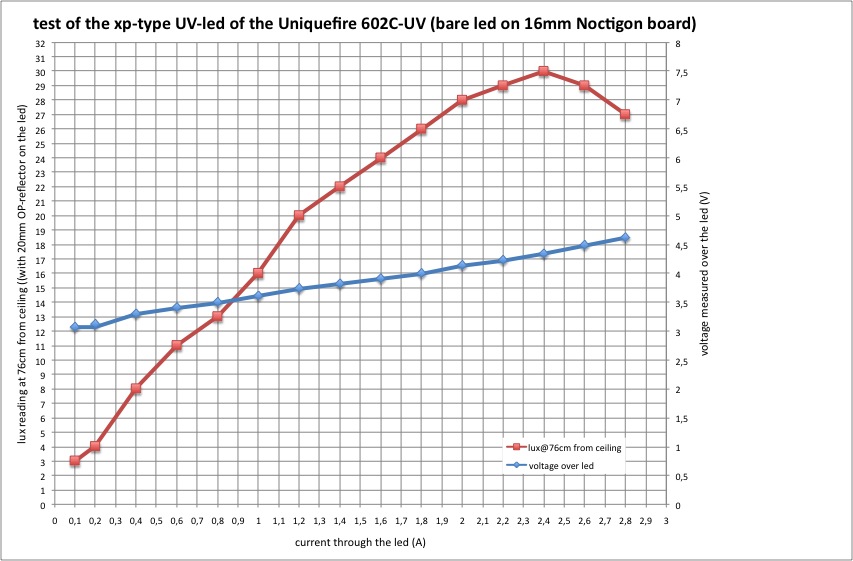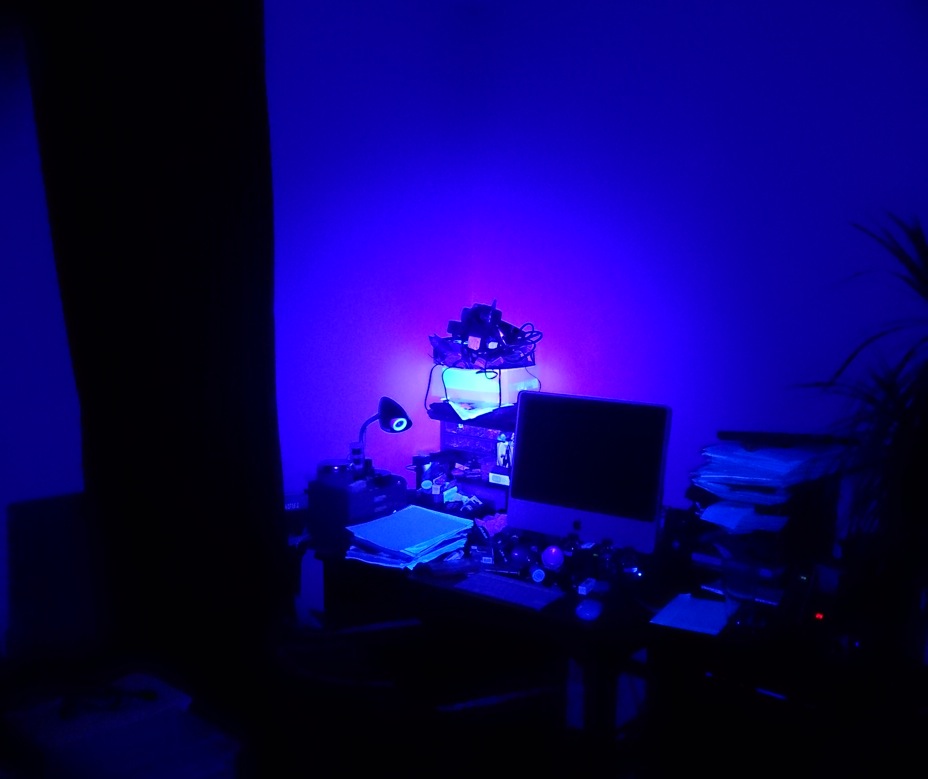I did a small review on the Uniquefire 602C-UV not so long ago, and yesterday I did some testing on the led that is in it, and I thought at least some of you would like to see the result. It is stated as a 395-405 nm led, so it is long wave UV, overlapping just a bit with the visible area (it has a clear purple glow). I assumed correctly in the review that the led has a xp-footprint, so for the test I could reflow the led on a 16mm Noctigon board (I have some of those spare because Intl-outdoor incorrectly sent me 4 xp-g Noctigons instead of xm-l's. Hank resent the xm-l's in the meantime, and I got the xp-g's for free for the trouble :-) ). I mounted the board on a chunk of aluminium with a reflector on top pointing at the ceiling and connected the power supply. I roughly measured current, voltage over the led, and ceiling bounce lux. It is not very useful to calculate lumens from UV-leds (the maximum output 30 lux would correspond to 62 lumens FYI, that is if the sensitivity of my lux-meter is correct at these short wavelengths), so I give the raw lux-numbers in the graph:

In the stock light the current through the led is about 1A. That gives a nice output, but as you can see in the graph, at least on copper (I even do not know what happens on the stock alu-board because I haven't tested it) you can go a fair bit higher than that, up to 2.4A with almost twice the output  . However the voltage goes up quickly as well (it reminds of the Nichia 219) so with a single Li-ion you do not get there (I get 1.6A direct drive, a bit more on that later).
. However the voltage goes up quickly as well (it reminds of the Nichia 219) so with a single Li-ion you do not get there (I get 1.6A direct drive, a bit more on that later).
Concluding, if you are looking for a led in this wavelength, this led is very convenient to use in a simple flashlight mod, with its xp-footprint and a Vf similar to white leds, and as already shown in the review (although I can not compare it to many other UV-leds, I have a p60 drop-in of the same wavelength I bought two years ago, it has definitively more output than that one), the output is great! And the most convenient source for this led for me is just buying the Uniquefire 602C-UV for 11 dollars on dx (it leaves you with a nice cr123 host as well :-) ).
After the test I put the board in an old (dirty) p60 drop-in I still had somewhere, direct drive, 1.4A on a 16340 IMR, 1.6A on a 18650, and now I have a bit of a UV-thrower  :
:

The UV does funny things with camera's, in reality the colour is all purple, instead of going from blue to purple to pinkish.
3 meters from corner:

4 meters from wall:
